If only every dessert could be like til ke ladoo.
It’s one thing to enjoy the sweet, balanced flavors like this sesame and jaggery treat can offer. Certainly we all can get around the keystone Indian festivals of Diwali and Makar Sankranti.
It’s an entirely different story, however, when you can enjoy the sweet in the name of keeping good health.

Til Ke Ladoo, Sesame Seeds, Ancient Medicine, Makar Sankranti
Before diving into til ke ladoo’s preparation, let’s first take a look at how and where its recipe came from. You might be surprised like we were about its original purpose.
Til Ke Ladoo – The Delicious Medicine
They might be easy to overlook, but sesame seeds – or ladoo in Hindi – are incredibly densely packed with key nutrients and minerals beneficial to our health. From the Assyrians to the Babylonians to even the early Hindus, sesame seeds long served as a symbol of good health and even immortality.
To be fair, the ladoo deserves this distinction. Sesame seeds are a strong source of dietary fiber – one ounce of them can contribute up to 16% of your daily fiber requirements. The seeds are also rife with minerals like iron, zinc, magnesium, copper, manganese, calcium and more.
As a result, sesame seeds held a prominent significance in the Ayurveda, the ancient system of life in India. Regular consumption of ladoo was thought to help prevent disease and stave off any general physical weakness. Interestingly, various preparations of ladoo were apparently also given to teenagers to help keep surging hormones in equilibrium.
Sesame was even a critical ingredient in performing surgery. According to the Sushrita Samhita, an ancient Indian medical text covering surgeries (even rhinoplasty!) from the 6th Century BC, frequently mentions sesame oil and sesame seeds as an antiseptic for before, during and after surgeries.
The recipe for til ke ladoo itself might have actually arisen from these early surgical times. To make it easier for patients to eat sesame seeds, doctors would coat sesame seeds in jaggery and shape them into easily consumable round shapes.
Of course, a recipe this tasty deserved a greater stage than that of the operating room.
Celebrating Makar Sankranti
Til ke ladoo can be made any time of the year for festivals, weddings, parties or even as an everyday snack, but there’s one celebration in the Indian calendar to which it’s especially linked: Makar Sankranti.
The significance of Makar Sankranti – the Indian winter solstice, if you will – can be deduced from the meaning of its name. The word Sankranti is the Hindi word for movement, while Makar equates to the zodiac sign of Capricorn. In the Indian solar calendar, Makar Sankranti thus marks the moment when the sun moves into the Capricorn constellation and marks the beginning of the harvest season.
Also called the harvest festival, Makar Sankranti marks one of the most widely celebrated days throughout all of India. The celebrations vary across the country’s diverse regions, but there are three common themes shared across all festivities: prayers, sweets and kites.
Til ke ladoo is at the forefront as far as sweets are concerned. There are a wide array of superstitions around eating til ke ladoo on Makar Sankranti, but the one of the most prevalent is that the sweet brings with it mental peace and grants its eater a long, healthy life in the New Year.
About the Recipe
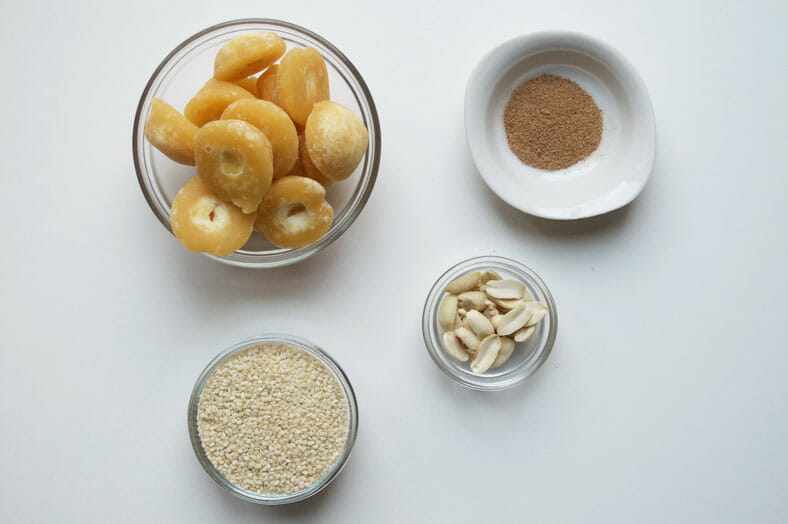
There is very little that’s “complicated” to preparing til ke ladoo, although there are some guidelines we can offer to make preparing it much, much easier.
Preparing the Mix
We’ll start with the mix itself. At the core of the recipe, there are three key components to any til ke ladoo recipe: jaggery, peanuts and sesame seeds. There is a small debate about whether or not peanuts belong as a “traditional” ingredient technically, but they are common enough to have in there if you so choose.
Before creating your syrup, you’ll want to roast the crushed peanuts and sesame seeds. It’s both efficient and helpful to pre-roast the seeds in the same pan where you’ll create the jaggery syrup, since they give off aromas and oils that will only help flavor the syrup further. To roast, simply put your nuts and seeds over a dry heat until they start to slightly brown and become fragrant.
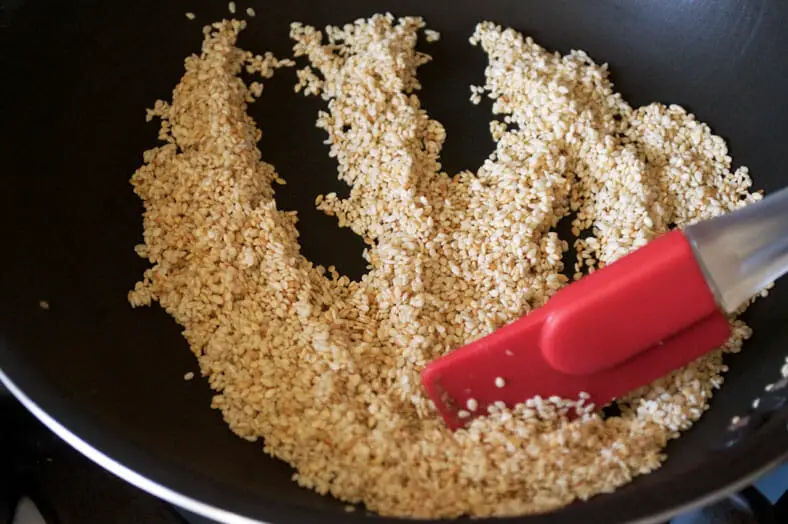
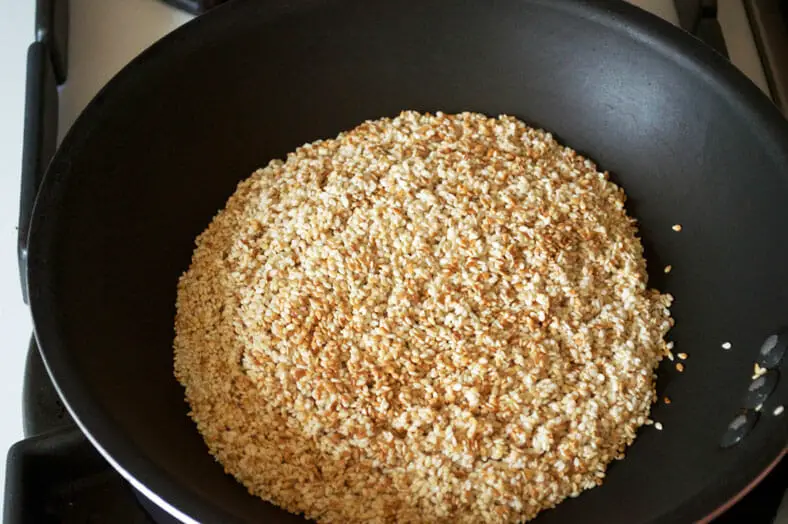
Next, you’ll take a little bit of water and heat it up in the pan. The water will be very helpful in helping break down the jaggery pieces and creating a syrup with a little more of a forgiving viscosity. When the water’s hot and/or bubbling, add in your jaggery pieces and start to stir.
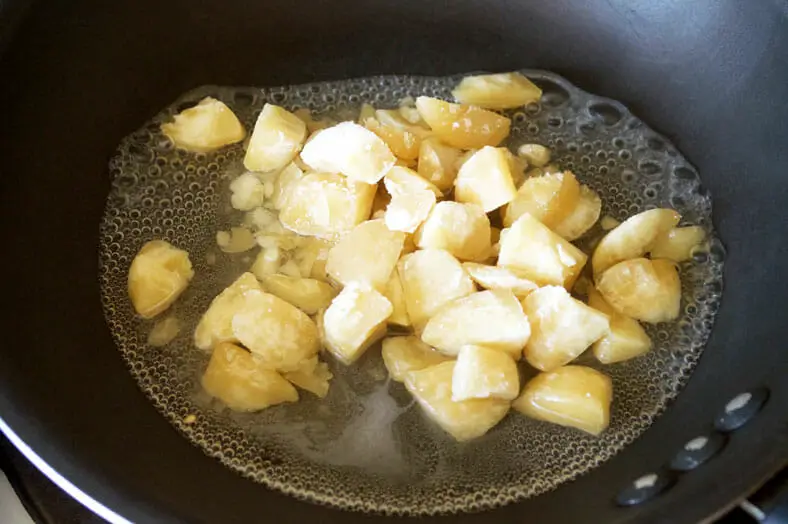
Technically, jaggery is no more than boiled down sugar cane juice into a solid form. It has some health properties of its own, but it’s a popular ingredient in the Indian subcontinent because of its sweetness.
Once you place the jaggery into the pan, you’ll use a spatula or something similar to stir the pieces around and to break the pieces down. The jaggery will dissolve into the water, and you’ll get a beautiful goldenrod-looking syrup.

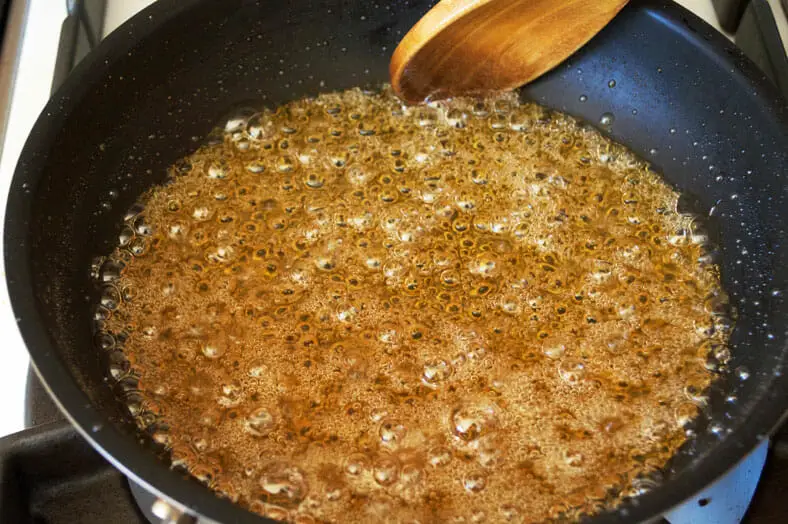
Depending on who you ask, you’ll either add ghee (or in our case, coconut oil) and a sweet spice like cardamom or cinnamon. Some won’t, but this is a decision totally up to you. If you do, however, then you’ll want to add both ingredients in once the jaggery has been dissolved. Stir everything well together, and continue to stir as the water starts to evaporate and the syrup becomes slightly thicker.
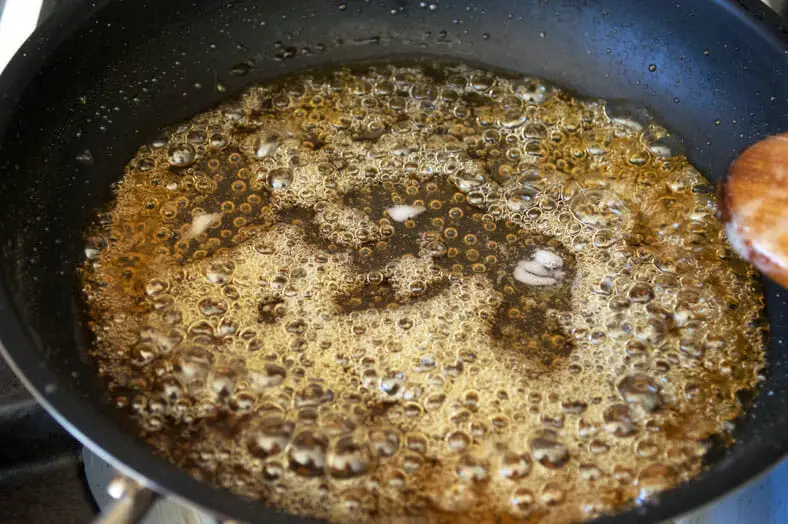

As you come into a nice, thick but still very cooperative syrup, add back in your sesame seeds and peanuts then stir around. You’ll want to make sure that everything is mixed well together and that the solid ingredients are well coated in the syrup. Once you can confirm this, take the pan off your stovetop heat and quickly transfer it to a cooler surface. One of the best surfaces for us actually turned out to be a regular dining plate topped with parchment paper.

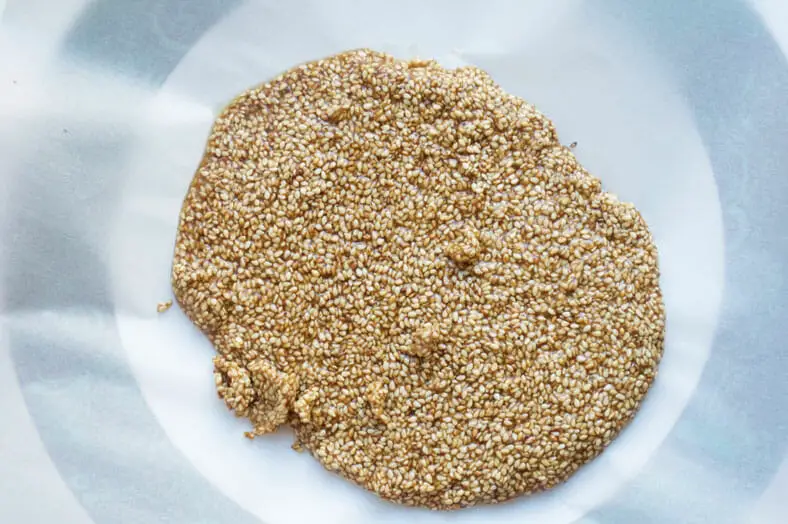
Rolling the Ladoo
When it comes to rolling, you’ll need to act swiftly. It’s a fine balance between not rolling your til ke ladoo into balls too soon – the syrup will be too warm, and you’ll burn your hands – and not waiting too long for the syrup to harden.
One of the keys to quickly and efficiently rolling your til ke ladoo is in coating your hands (the most effective tools we have) with a fat like ghee or coconut oil. Be sure to coat every part of your hands, otherwise the mixture will stick to your hands. Re-coating often is definitely encouraged as well!
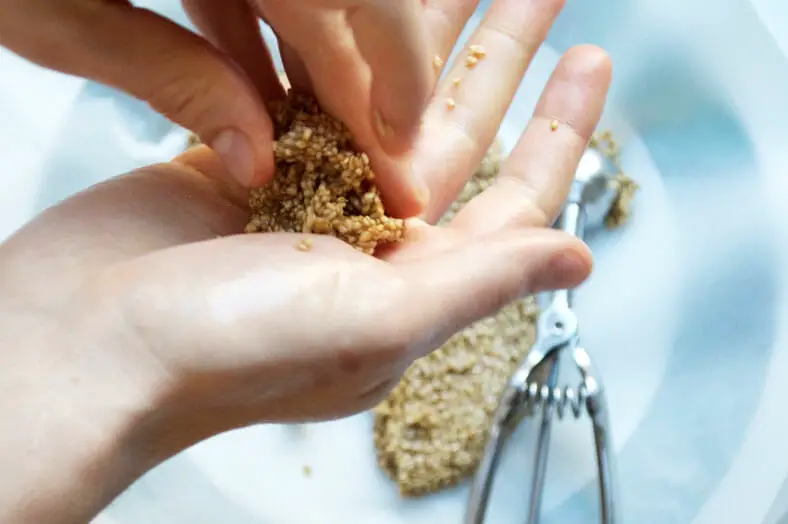


With oiled hands, take a small spoonful of your mixture and quickly put it into the palm of your hand. With short, forceful bursts of pressure, mold your til ke ladoo into the shape of a round ball, then set aside onto a plate for it to congeal and cool. It does require a little of finesse, but it’s a motion you’ll very quickly get the hang of.
Repeat until you’ve turned all of your mixture into ball shapes, and you’re done!
Our Take on the Recipe
We were particularly picky when it came to choosing our resource recipe, especially because of the learning process that went into rolling the perfect til ke ladoo ball. Thanks to a helpful walkthrough of the recipe, we found our perfect reference to go by, though there were still a few adjustments we wanted to make.
For one, we added peanuts back into the recipe. Like we mentioned earlier, peanuts are (depending on who you ask) considered a traditional ingredient in most recipes, and we personally liked the flavor that the peanut added to til ke ladoo overall. If you have a peanut allergy or just prefer not to use them, however, that’s totally fine as well.
Another challenge we set for ourselves was to make the recipe vegan-friendly. Really, it was an easy task since we only needed to swap out coconut oil for ghee. The coconut oil did make the syrup slightly more runny than its ghee-based counterpart, though, so we scaled the amount of coconut oil down to compensate for this change.
Finally, we scaled the entire recipe down to accommodate more manageable portions. Granted, til ke ladoo is meant to be enjoyed by large crowds of people, but even a serving of 12 sweets is more than enough to keep several people well-satisfied.
Other than that, the recipe was fast, easy and super fun to make, and it’s a perfect snack for really any time of year.
Enjoy!
What’s your secret to rolling your til ke ladoo? Comment below!
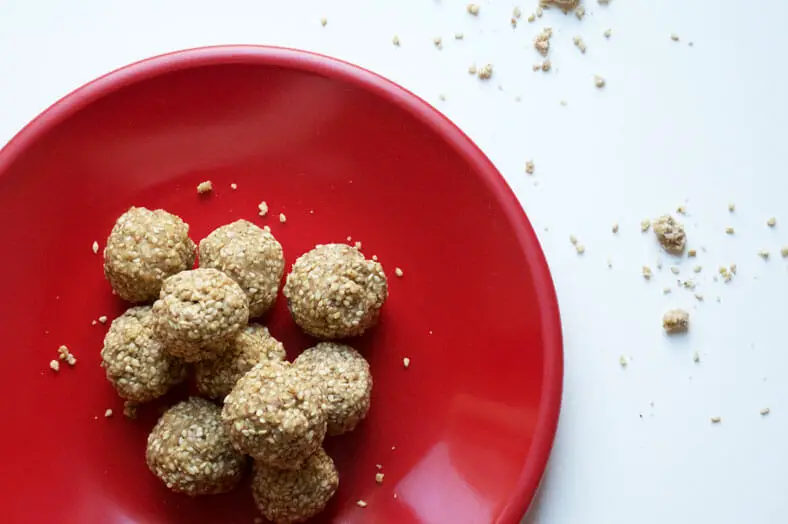

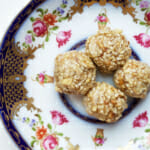
Tilkeladoo Vegan Indian Sesame Seed
- Total Time: 20 minutes
Ingredients
- 1 cup sesame seeds
- 1 tablespoon raw peanuts, finely crushed (optional)
- 1 cup jaggery (a hardened sugar cane), cut into small pieces
- ¼ cup water
- ½ tablespoon coconut oil
- 1 teaspoon ground cardamom
Instructions
- Start by taking a small pan over medium-high heat. When it’s heated up, add in your peanuts and begin roasting if you’re using them. If not, skip this step and the next one
- Roast your peanuts for 3-4 minutes until they start to brown, then remove them from the heat and set aside
- Next, add your sesame seeds and roast them as well. This should take between 3-5 minutes until they start to brown and become fragrant
- When roasted, remove your sesame seeds from the pan and set aside as well
- In the same pan, you’ll then start by adding your water. Give it around 30 seconds for the water to heat up and maybe even bubble
- With your water heated, add in your pieces of jaggery and begin to mix around. The jaggery will start to dissolve, and a syrup will start to form. It’s helpful here to use a ladle to stir and help break the jaggery pieces down
- Next, add in your coconut oil and cardamom powder and continue stirring the jaggery syrup for 1 minute. The syrup will become darker and slightly thicker as the water starts to evaporate away
- As the syrups starts to thicken, reduce your stovetop heat to a bare simmer
- As your syrup continues to simmer, fold in your sesame seeds and peanuts and stir thoroughly
- Once the sesame seeds and peanuts have been well-coated in this jaggery syrup (and you generally have a fairly thick paste forming), turn off your stovetop heat and transfer your til ke ladoo mix to a plate line with parchment paper
- Wait about 1 minute for the mixture to cool. In the meantime, rub some coconut oil through your hands to coat them well
- Take a spoonful of til ke ladoo into your hand and begin quickly molding it into the shape of a ball. Be careful here, because the mixture might still be very warm! Move quickly to keep from hurting yourself with the heat
- Continue to mold all your til ke ladoo into a ball shaped, then set aside. Once it’s hardened, you’re all done!
- Prep Time: 5 min
- Cook Time: 15 min
- Cuisine: Indian

